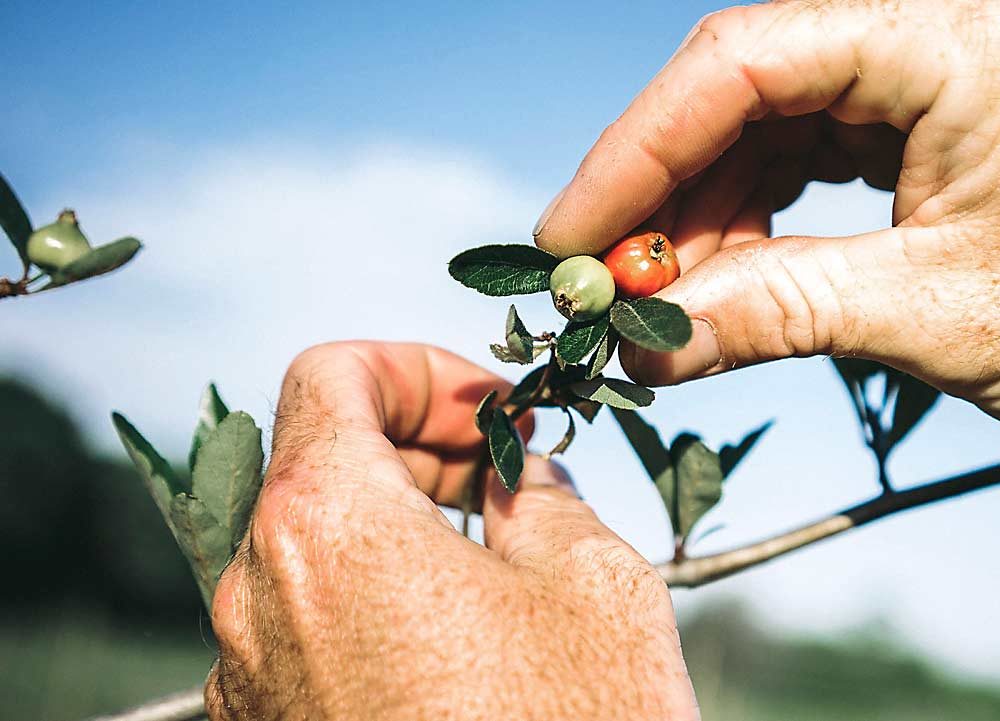
Editor’s note: Good Fruit Grower was saddened to learn that mayhaw grower Willis Thames, featured in this article, died on Jan. 8, 2020. Our condolences go out to his family and the mayhaw community he loved.
At his farm in Jacksonville, Florida, Scott Meyer is planting the world’s largest mayhaw orchard, with a vision of growing a commercial industry for the beloved berry that grows wild in the swamps and bayous of the Southern United States.
The eastern mayhaw, Crataegus aestivalis, and the western mayhaw, C. opaca, are hawthorn trees that generally flower in mid-February to mid-March and produce a crop of 0.5- to 1-inch fruit that ripens in mid-April to mid-May. The fruit resembles a crab apple in appearance and has a tart flavor, similar to a cranberry. Though technically a pome fruit, mayhaws are commonly called berries.
Treasured by generations of Southerners, mayhaws have been eagerly collected each spring and made into a variety of culinary treats, from jelly to wine. But as their native habitat disappears or is claimed for other uses, access to wild mayhaws is increasingly restricted and production has dwindled.
Demand for the fruit, however, has grown.
Though some commercial mayhaw orchards have existed for years, none approaches the scope Meyer has in mind, and with new plantings, new cultivars and new tissue culture production, he aims to inspire others to join the industry.
Researchers from the University of Georgia and elsewhere have looked at the mayhaws’ potential for commercial production and found quite promising results:
—Though indigenous to shady lowlands, mayhaws grow well in sunny upland areas with irrigation and are well-suited for commercial orchard production in the Southeast.
—Mayhaws perform best with a soil pH between 6.0 and 6.5.
—The trees can tolerate freezes during dormancy, but because they have a single bloom, a late spring freeze can severely impact production. Recent research by the Louisiana Mayhaw Association estimates chill hour requirements between 400 and 650 hours.
—Like other pome fruits, mayhaws are susceptible to fire blight and quince rust or cedar-apple rust and require annual spraying and pruning to control disease.
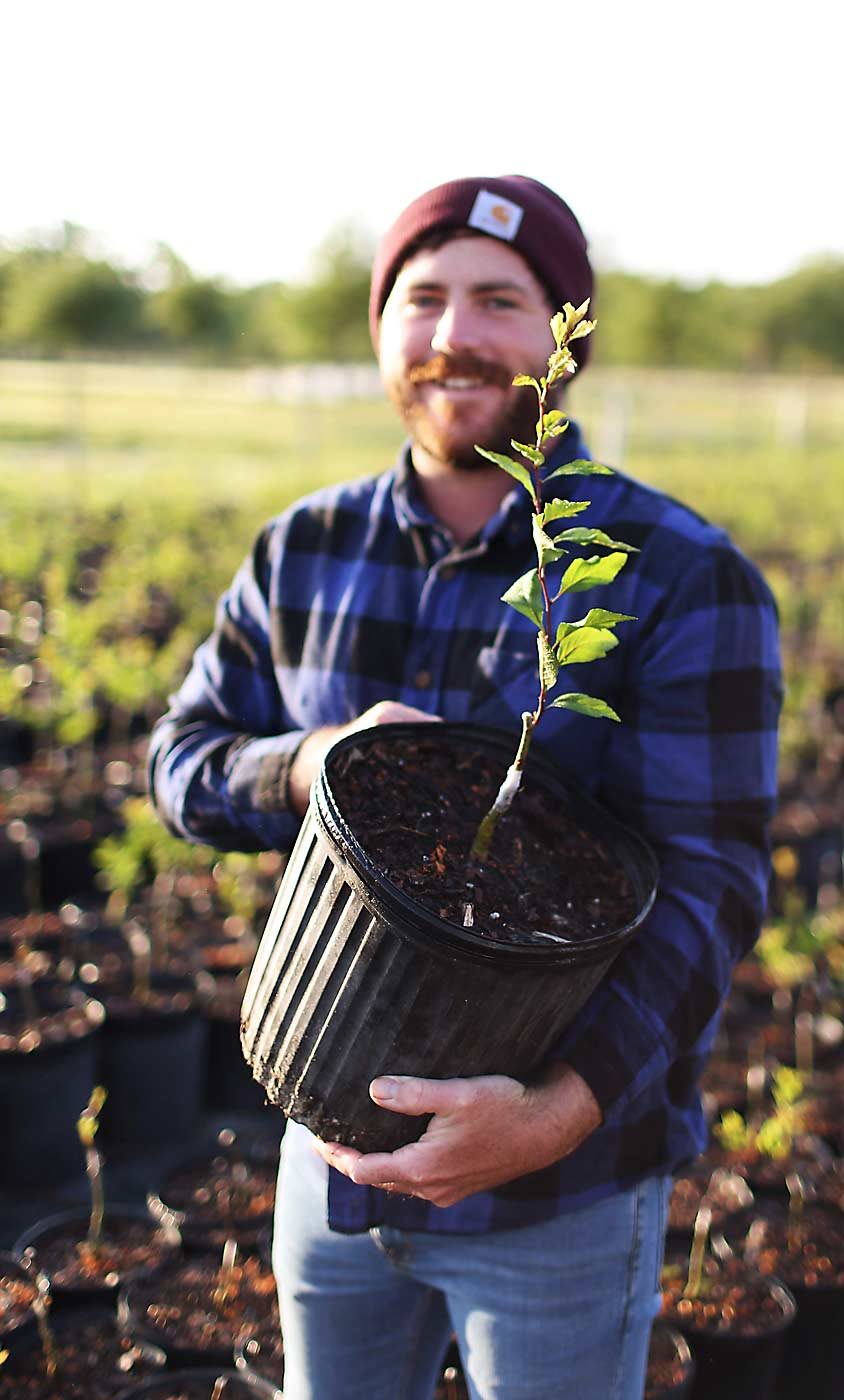
Growing an industry
With just over 50 acres currently planted in mayhaws, Meyer will add 100 acres this winter at a nearby orchard in Jacksonville and an additional 100 acres in Southern Georgia in 2021.
He’s planting 145 trees per acre in 20-foot rows with 15 feet in the row. “People plant mayhaws in every different way you could imagine, just because there’s not been a uniform way that’s been proven to be correct yet,” he said.
Meyer harvests his mayhaws by shaking the trees — by hand — and collecting the fruit on tarps. He anticipates starting machine-shaking in 2021.
“That’s always been the dream of all mayhaw growers,” Meyer said. “Some type of device that shakes the fruit — that’s not your whole family.” He’s looking at a frontside shaker that wraps around the tree and catches the fruit in a basket, similar to equipment used for olive harvest.
For processing, the mayhaw performs a lot like an apple, Meyer said. “It’s an incredibly easy fruit to handle and deal with. The pH of the juice is extremely low — below 3 — so you pretty much eliminate a lot of your food safety and spoilage concerns just by the natural attribute of the mayhaws,” he said.
Meyer produces jelly and cider with his mayhaw juice, and sells both at his Jacksonville farm, Congaree and Penn.
Wild tradition meets new cultivars
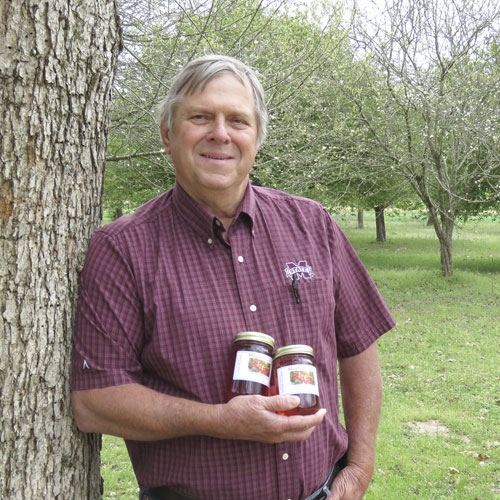
Willis Thames, of Big Swamp Farm in Collins, Mississippi, has been growing mayhaws for about 25 years and has about 250 trees. That’s big business in the mayhaw world.
“All of my varieties are old varieties they just found in the wild, in the swamps,” he said, “but they do have some newer varieties now that are going to be a lot better than the ones I’ve got.”
Thames said those newer varieties bloom later, have bigger, redder berries, and 90 to 95 percent of the fruit ripens at one time. Some of his trees require shaking three or four times to harvest all of the fruit.
He used to sell berries and juice, but now processes all of his fruit and sells the juice to about 15 customers, including a company who sells mayhaw jelly on the internet. One of his regular customers is in Georgia.
“I’ve been selling to him for five years and I’ve never filled an order for him yet,” he said. “He always asks for 300 gallons, but the most I’ve ever taken him was 200.”
Thames, who turned 70 in April, plans to continue adding some of the newer varieties to his orchard. “Some folks say I need to be slowing down instead of planting more trees,” he said. “But I like my mayhaws, I really do.”
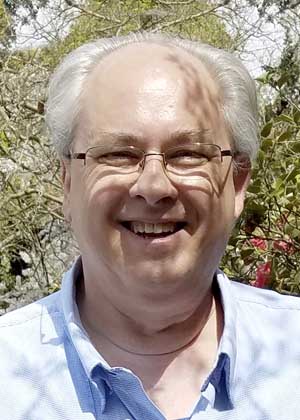
Andy Thompson, president of the Louisiana Mayhaw Association, likes to hear about new plantings. “Even as we’re planting orchards, we’re still losing to the environmental change,” Thompson said. Formed in 1995, the association recently estimated their members have about 14,300 trees in production, with the largest orchards between six and 10 acres.
Thompson started growing mayhaws about four years ago and currently has 3 acres planted with 50 trees per acre spaced at 30 feet on center. He plans to plant another 3 acres in the spring.
At his first board meeting, Thompson asked the members how they market their product.
He said they all looked at him inquisitively and said, “We don’t market our product. We sell everything we ever grow.”
A lot of those sales are to family and friends who are familiar with the fruit, but the mayhaw has caught the attention of large retailers as well. Blue Bell Creameries, based in Brenham, Texas, once inquired about making a mayhaw ice cream. “Turned out, to produce a special run of that ice cream, they required more juice than is produced in the entire state of Louisiana,” Thompson said.
Convenience store giant Buc-ee’s called and requested 450 gallons, but Thompson could only collect 50.
“There is a demand,” he said. “We need more growers and we need more trees in the ground.”
Getting more trees in the ground
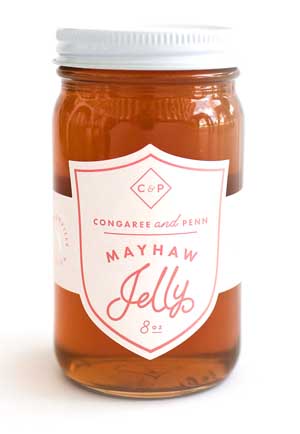
Meyer plans to have 36,000 mayhaws when he finishes his planting in 2021.
But when he started out in 2014, sourcing the trees posed a challenge. From Jacksonville, he traveled as far as western Louisiana, about 750 miles.
“I hauled a trailer along and met with every grower who said they sold the trees,” he said, buying about 600 trees. “Quickly we realized the nursery practices weren’t there with these small hobby nurseries, to give you the quality and consistency you want in the field.”
Meyer met a successful mayhaw grower in Valdosta, Georgia, Jimmy Moore, and learned his technique for grafting the trees. “He always put a good emphasis on the rootstocks,” Meyer said. “That was the first stage of us improving everything.”
The second year, Meyer grafted about 600 trees. The following year he grafted about 2,000 trees, and 5,000 trees the next year. “All the while trying to get away from that because we wanted to get more homogeneity in the crop,” he said.
Recently, Meyer partnered with North American Plants, the Oregon-based tissue culture company, to develop production protocols for two varieties of mayhaw: Genuine Giant, a trademarked mayhaw Meyer developed, and an as-yet unnamed variety that will be available in late summer 2020.
“I’m really happy with that one because the parent material is really performing well,” he said. “If it proves to be the quality and the caliber of what I think it is, it’s something to seriously consider as long as your temperatures and your soils line up.”
Though accepted in the tree fruit industry, tissue culture is uncharted territory for the mayhaw, and Thompson said they don’t yet know what the results or output and production is going to be.
But Meyer is optimistic and sees a bright future for the mayhaw industry.
“I enjoy making my jelly and my cider,” he said, “but my vision is scaling up enough to be able to supply tankers of juice for other food manufacturers that are interested in bringing this fruit and this flavor out into the world.” •
—by Jonelle Mejica




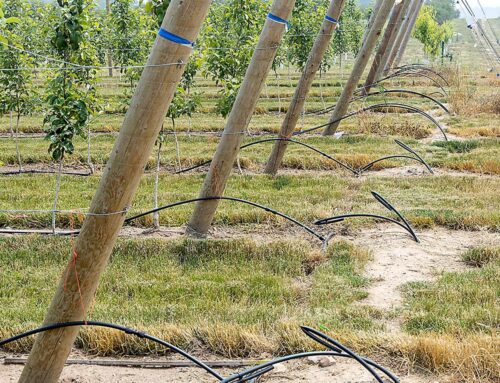
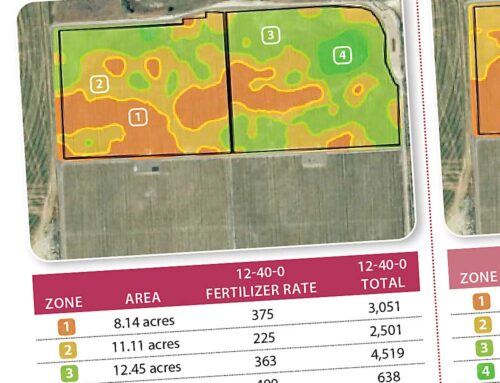
I would like to know where the mayhaw farm is in Jacksonville? I would love to go there and see it and get some jelly. My dad used to make this for me when I was a kid!! Thank you for bringing the mayhaw back!!❤️
Hi Paula, I’m glad to meet another mayhaw lover :-) The farm in Jacksonville is Congaree and Penn, and you can find out more at their website: https://www.congareeandpenn.com.